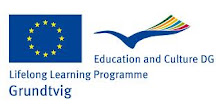Scultbord was thought to be a meeting point among six different European institutions: a Spanish
Regional Government, a Greek Municipality, a European Association of Border Regions, a
Bulgarian Chamber of Commerce, a Hungarian non‐profit Development Agency on a border region
and a Portuguese Foundation. Six different profiles, from six different geographical places but
linked by fact of being on borders.
Robert Schuman said that frontiers are the scars of the History, and it is true that History cannot
be rubbed. But the drawbacks of the old frontiers can become opportunities when living in Europe
without borders. In fact, there are no longer physical barriers, but cultural barriers still exist. Only
when these obstacles disappear, Europe will get an integrate development.
Culture is the most powerful weapon to give Europe social cohesion and to create a common
space free of the prejudices between old neighbours. Regions near the frontiers need to know
about the culture of the other countries because that is a first step to collaborate without
misunderstandings.
Scultbord has been a project built through five workshops: Évora, Portugal (November 2010);
Kavala, Greece (September 2011); Mérida, Spain (October 2011); Blagoevgrad, Bulgaria (May
2012); Szeged, Hungary (June 2012). The AEBR (Association of European Border Regions) has been
the sixth column of this project, spreading the information and acting as a link with all the
partners. As it was planned at the project, this Best Practises Manual collects not only the cultural
activities organized by partners, but also some other examples an experiences which have been
carried out by other institutions in their regions. These examples have got a linking element
among them: Events and activities focused on adult population to spread the culture of the other
country, the culture of our neighbours.
Perhaps some of those examples are difficult to be transferred to other places in Europe, but there
are always some ideas that could be implemented everywhere. That was the aim of the project:
Try to make our experiences useful for other regions.
This Best Practices Manual is available (pdf) sending an e-mail to: scultbord@gmail.com
Published: 31st July 2012










